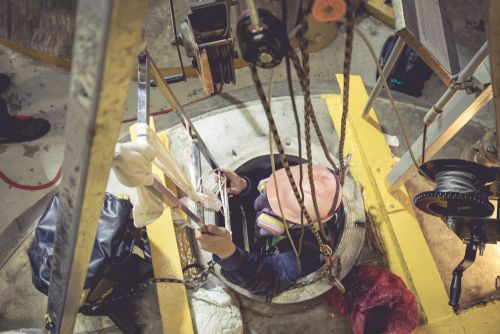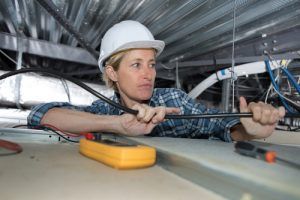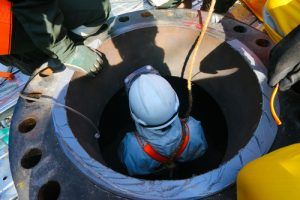
Confined Spaces and their Inherent Risks

Working in confined spaces is one of the biggest safety hazards in the workplace. Each year in Canada, many workers are killed and injured while working in a wide variety of confined spaces. Often more hazardous than run-of-the-mill work spaces, confined spaces pose great risks and thus require an effective “Confined Space Hazard Assessment & Control Program” for every workplace. In this article we’ll explore several different types of confined spaces that are more commonly seen in workplaces, and we’ll address the risks involved. Knowing what these are and why they pose risks will enable you to plan and prevent to mitigate risk.
Definition of Confined Spaces
A confined space, according to the Canadian Centre for Occupational Health and Safety (CCOHS), is a “fully or partially enclosed space” that:
- Was not designed nor intended for continued occupancy by people
- Has limited or restricted entrance or egress; or has a configuration that can complicate first aid, rescue, evacuation, or other emergency response
- Poses risk for the safety & health of those who enter, because of
- its design, construction, location or atmosphere
- materials or substances contained within
- work activities being carried out inside
- mechanical, process and safety hazards
When applying this definition especially in a broader sense, we can see that confined spaces are more common than many people assume.
Types of Confined Spaces
Some of the confined spaces seen in workplaces include:
- Wells
- Storage bins
- Boilers
- Sewers
- Silos
- Pipelines
- Sumps
- Vessels
- Reservoirs
- Tanks / Vats / Hoppers
- Pits / Trenches / Ditches (if egress is limited)
… and many more. Each one carries with it a degree and nature of risk, which means that employers must (1) be aware that it’s a confined space, (2) understand that there are inherent risks involved, and (3) have a plan (such as the aforementioned “Confined Space Hazard Assessment & Control Program”) to lower the risk involved and enable employees to be better aware of and trained for the risks these spaces pose.

How to assess confined spaces
In order to reach an accurate assessment of the confined space(s) you’re dealing with in your particular workplace, it’s important to consider the major risks involved.
Lack of oxygen is a huge risk factor in many workplace confined spaces.
Fire or explosion are also major risks, depending on the space and materials involved.
Toxicity of materials is another significant consideration.
Drowning (be that in liquids or free-flowing solids) is yet another risk factor.
Together, these are the four main risk factors of working in confined spaces. These are not mutually exclusive, of course, nor are they the only risks to consider.
Before conducting work in a confined space, management and staff should be taking the following actions as part of a comprehensive confined space safety & risk-mitigation plan:
- Testing – qualified individual(s) must test the confined space for oxygen level, explosive conditions, and flammable & toxic contaminants
- Purging & Ventilation – If the test results show the atmosphere may be harmful or flammable, purging & ventilating needs to take place
- At least three people are required at a site – The person working in the confined space; someone standing at the entrance; and another employee within sight & shouting distance and free of obstruction
- Personal protective equipment & Lifeline – A competent person appointed by the employer must identify all required PPE and ensure it is properly functioning; each entrant must wear a Class E full-body harness attached to a lifeline
- Continuous monitoring and communication – Gear such as radio, microphones, hand signals and/or flags must be in place to allow communication among all personnel; the competent person must ensure that the confined space is continuously monitored for the hazard while the employee is in the confined space
This is the foundation of an effective confined-space risk assessment & prevention plan. While a comprehensive program involves much more, of course, understanding the fundamentals is a great first step in lowering the risks of confined spaces in your workplace.
Let Advanced Consulting & Training Help You Assess Confined Space Risk

At Advanced Consulting & Training, we have extensive experience and knowledge when it comes to workplace safety with specific regard to confined spaces. At our facility in Ottawa we have a confined space simulator, and our team are highly versed in safe operations within confined spaces. We’ve helped countless companies and organizations assess and reduce their confined space risk, ensuring greater work safety conditions. Contact us today for more information and to find out how we can help. You may be particularly interested in the following courses:


